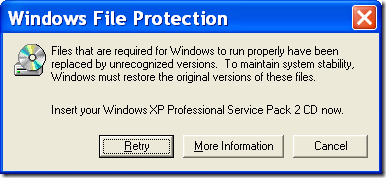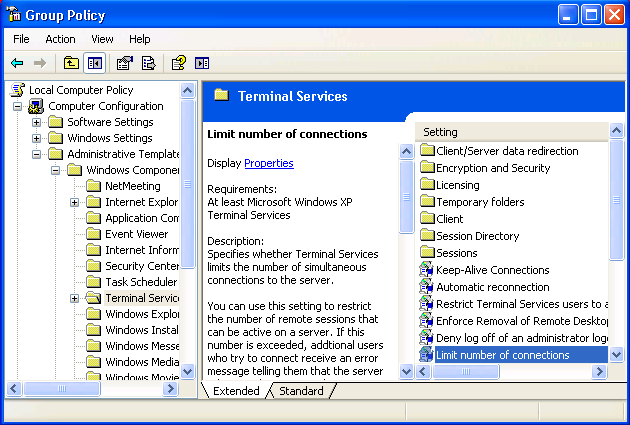Set a password in a Word document
To encrypt your file and set a password to open it:- Click the Microsoft Office Button
 , point
to Prepare, and then click Encrypt
Document.
, point
to Prepare, and then click Encrypt
Document.

- In the Encrypt Document dialog box, in the Password box, type a password, and then click OK.
You can type up to 255 characters. By default, this feature uses AES 128-bit
advanced encryption. Encryption is a standard method used to help make your file
more secure.
- In the Confirm Password dialog box, in the Reenter password box, type the password again, and then click OK.
- To save the password, save the file.
 Top
of Page
Top
of PageRemove password protection from a Word document
- Use the password to open the document.
- Click the Microsoft Office Button
 , point
to Prepare, and then click Encrypt
Document.
, point
to Prepare, and then click Encrypt
Document. - In the Encrypt Document dialog box, in the Password box, delete the encrypted password, and then click OK.
- Save the file.
 Top
of Page
Top
of PageSet a password to modify a Word document
In addition to setting a password to open a Word document, you can set a password to allow others to modify the document.- Click the Microsoft Office Button
 , click
Save As, and on the bottom of the Save As dialog, click Tools.
, click
Save As, and on the bottom of the Save As dialog, click Tools. - On the Tools menu, click General Options. The General Options dialog opens.
- Under File sharing options for this document, in the Password to modify box, type a password.
- In the Confirm Password dialog, re-type the password. Click OK.
- Click Save.
 Top
of Page
Top
of PageSet a password in an Excel spreadsheet
To encrypt your workbook and set a password to open it:- Click the Microsoft Office Button
 , point
to Prepare, and then click Encrypt
Document.
, point
to Prepare, and then click Encrypt
Document.

- In the Password box, type a password, and then click OK.
You can type up to 255 characters. By default, this feature uses AES 128-bit
advanced encryption. Encryption is a standard method used to help make your file
more secure.
- In the Reenter password box, type the password again, and then click OK.
- To save the password, save the file.
 Top
of Page
Top
of PageRemove password protection from an Excel spreadsheet
- Use the password to open the spreadsheet.
- Click the Microsoft Office Button
 , point
to Prepare, and then click Encrypt
Document.
, point
to Prepare, and then click Encrypt
Document. - In the Encrypt Document dialog box, in the Password box, delete the encrypted password, and then click OK.
- Save the spreadsheet.
 Top
of Page
Top
of PageSet a password to modify an Excel spreadsheet
In addition to setting a password to open an Excel spreadsheet, you can set a password to allow others to modify the spreadsheet.- Click the Microsoft Office Button
 , click
Save As, and on the bottom of the Save As dialog, click Tools.
, click
Save As, and on the bottom of the Save As dialog, click Tools. - On the Tools menu, click General Options. The General Options dialog opens.
- Under File sharing, in the Password to modify box, type a password.
- In the Confirm Password dialog, re-type the password. Click OK.
- Click Save.
 Top
of Page
Top
of PageSet a password for a PowerPoint presentation
To encrypt your presentation and set a password to open it:- Click the Microsoft Office Button
 , point
to Prepare, and then click Encrypt
Document.
, point
to Prepare, and then click Encrypt
Document.

- In the Password box, type a password, and then click OK.
You can type up to 255 characters. By default, this feature uses AES 128-bit
advanced encryption. Encryption is a standard method used to help make your file
more secure.
- In the Reenter password box, type the password again, and then click OK.
- To save the password, save the file.
 Top
of Page
Top
of PageRemove password protection from a PowerPoint presentation
- Use the password to open the presentation.
- Click the Microsoft Office Button
 , point
to Prepare, and then click Encrypt
Document.
, point
to Prepare, and then click Encrypt
Document. - In the Encrypt Document dialog box, in the Password box, delete the encrypted password, and then click OK.
- Save the presentation.
 Top
of Page
Top
of PageSet a password to modify a PowerPoint presentation
In addition to setting a password to open a PowerPoint presentation, you can set a password to allow others to modify the presentation.- Click the Microsoft Office Button
 , click
Save As, and on the bottom of the Save As dialog, click Tools.
, click
Save As, and on the bottom of the Save As dialog, click Tools. - On the Tools menu, click General Options. The General Options dialog opens.
- Under File sharing settings for this document, in the Password to modify box, type a password.
- In the Confirm Password dialog, re-type the password. Click OK.
- Click Save.
Another easy way forpassword Protection
On the Review tab, in the Changes group, click Protect Sheet.

- In the Allow all users of this worksheet to list, select the elements that you want users to be able to change.
- In the Password to unprotect sheet box, type a password for the sheet, click OK, and then retype the password to confirm it.
Note The password is optional. If you do not supply a
password, then any user can unprotect the sheet and change the protected
elements. Make sure that you choose a password that is easy to remember, because
if you lose the password, you cannot gain access to the protected elements on
the worksheet.
 More
information about the elements that you can select
More
information about the elements that you can select











































